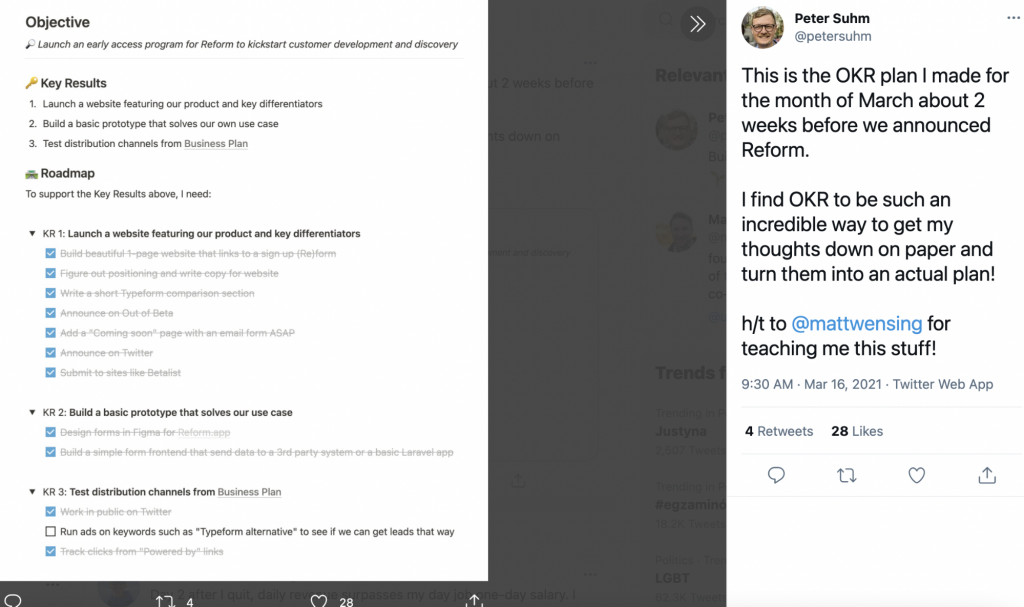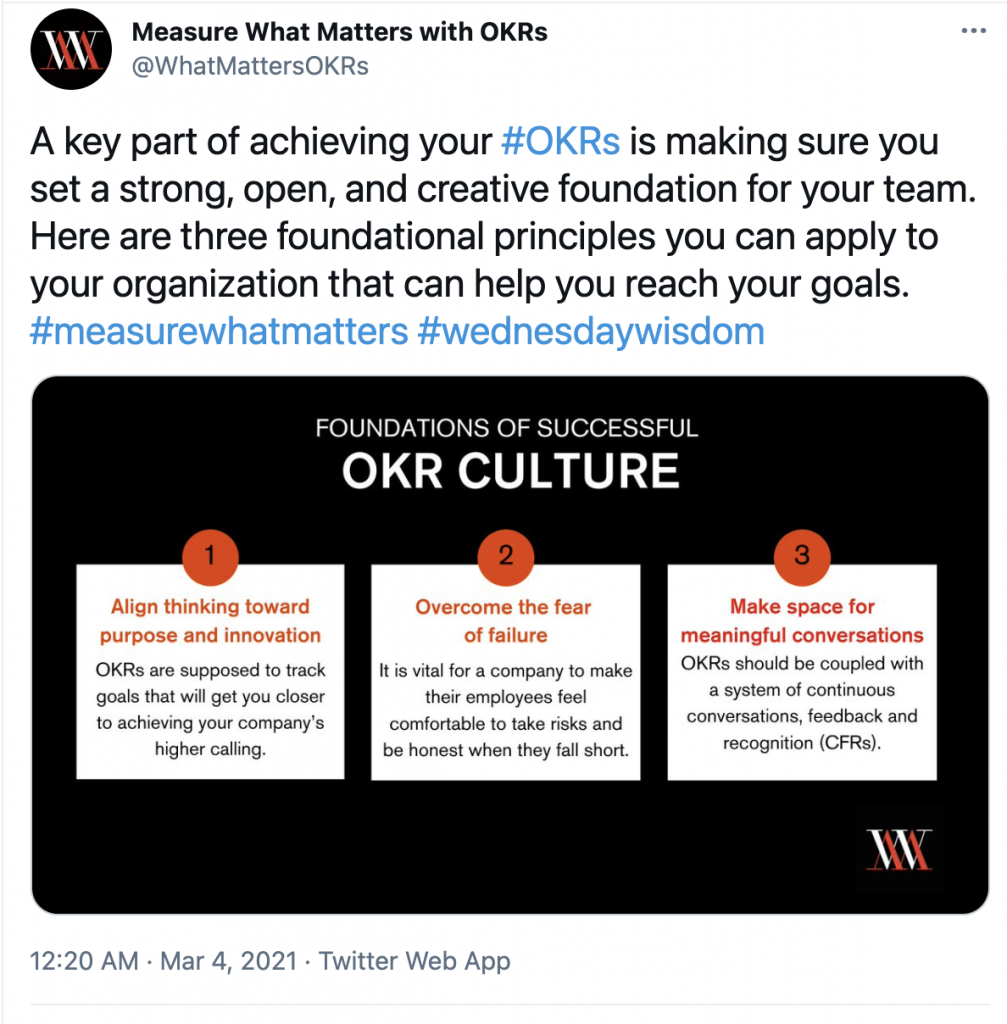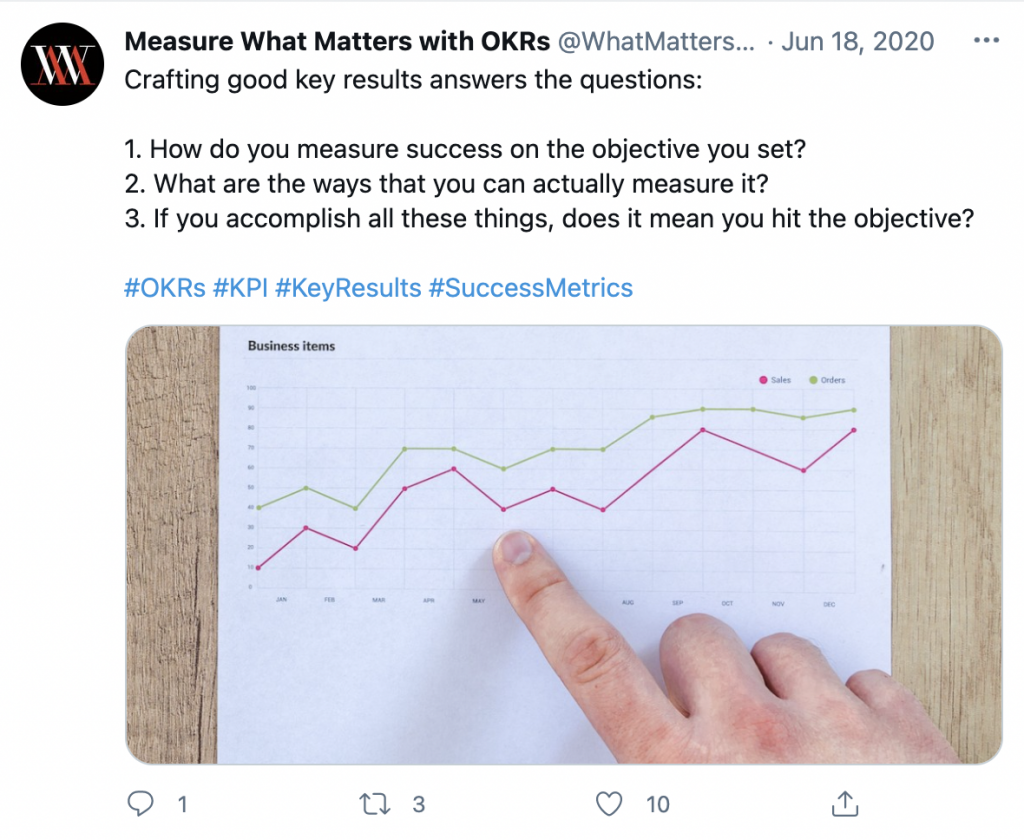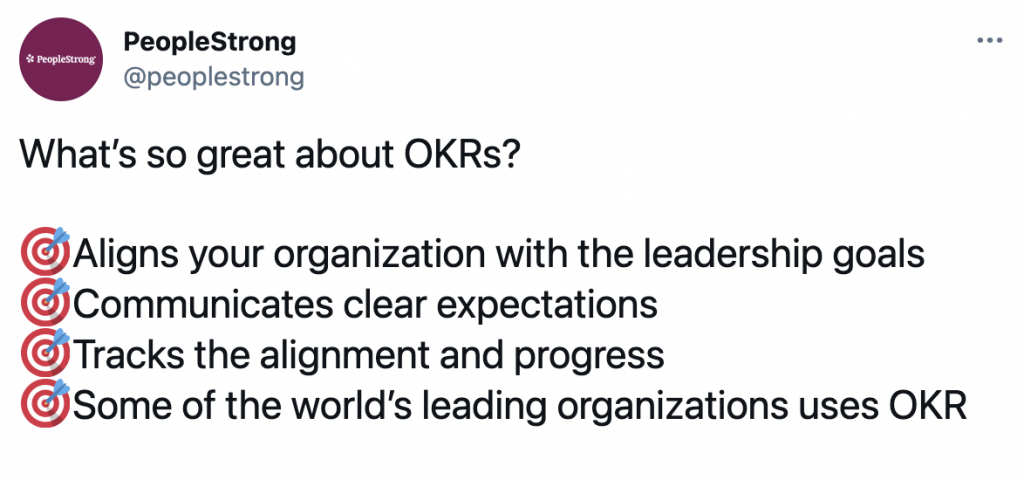Why You Should Use OKRs In Your Business
Business management is a difficult task, and what differentiates a good manager from a great one is the ability to set appropriate goals. It might seem logical to go for a top-down approach and simply set company goals that everyone needs to work towards. And it does work to a certain extent. Still, there’s a far better way of setting goals.
Quick Links
It’s called OKR or Objectives and Key Results. First introduced by Andrew Grove of Intel to manage his employees, OKRs became a go-to solution for major companies like Google, Amazon and Spotify. These objectives and key results are based on both top-down and vertical transparency of business goals.
OKRs are so valuable to your company because they help you and your employees articulate your goals with actionable steps to achieve them.
Begin by articulating your Objective, the bottom line of what needs to get accomplished. Your next task is to create three to five steps to achieve this goal. These are your Key Results. Key Results should be very specific and measurable. This may seem like a simple process but the act of writing down your goals makes you more than 40% more likely to achieve them. When you have a step-by-step plan with actionable items your company will be able to quickly achieve its goals.
Here’s how they work, what the benefits are, and how to implement them.
What are OKRs and their benefits?

Objectives and Key Results are a goal setting strategy that allows for much more dynamic and transparent management in companies of all sizes and industries. First devised by John Doerr, a venture capitalist who proposed them to Google, OKRs soon became a go-to management solution for multiple enterprises.
Now, objectives define the direction your company wants to go in. They’re usually grandiose in scale and inspirational. These are set by a business’s executives and c-level staff on a monthly or quarterly basis.
Key results, on the other hand, are smaller goals that you set to achieve your larger objective. These are accomplished by each team and cascade down to each employee. Bastin Gerald, founder & CEO of Profit.co describes them like that,
“OKRs help teams and companies execute their strategic goals using a well-defined operational framework. OKR is a goal management system used by teams, large and small, to collaborate and achieve stretch goals through a framework that requires regular check-ins, feedback, continuous learning, collaboration and problem-solving.”
Bastin further notes the importance of the fact that key results have to be quantifiable, contrary to the objectives, “Objectives (the O in OKR) are qualitative and inspirational, time-bound goals to be executed by a team (say, Recruitment) or an individual. An example of an objective can be – Build a high-performance analytics team. Key Results (KR), on the other hand, quantify the objectives and break them down to specific metrics that can be used to measure the achievement of the Objectives.“
According to him, an example of an OKR, “build a high-performance analytics team,” can then be divided into smaller parts that, ultimately, allow your company to achieve that objective:
“KR1: Hire 10 new employees for the analytics team,
KR2: 95% completion rate of “closed tickets” by team members within 30 days of hire,
KR3: Achieve 90% and above scores on employee satisfaction surveys for new hires.”
These key results can then be assigned to each employee to become an objective for them. They would have to come up with three to five key results for each of them themselves. For example, the first key result, that has now become an objective for an employee, “Hire 10 new employees for the analytics team,” could be broken down into:
KR1: Interview 20 candidates,
KR2: Write an announcement on social media,
KR3: Create a listing on JustJoinIT,
KR4: Reach out to 50 people via LinkedIn.
See, the fact that each employee has to come up with their own quantifiable solution to each objective maintains a sense of autonomy for them, which is incredibly healthy in terms of productivity and overall happiness. This ensures accountability and makes them feel like they’re doing actual tasks that make their company grow.
This allows for seamless, effective, and collaborative management across all departments. Now, it’s essential to mention the fact that OKRs have to be transparent for all members of the company. Everybody has access to the tasks each employee has devised for themselves, and everyone is on the same page in terms of the direction you’re heading.
OKRs involve five crucial elements (F.A.C.T.S):

Focus
OKRs should be limited to one to seven objectives per sprint. The benefit of focus is the fact that you’re not wandering from goal to goal, but you’re entirely concentrated on what matters. The fewer OKRs you set, the better, as it enables you to pinpoint the path you want to take.
When you’re setting your OKRs, you should begin with asking a simple question: what’s the most important for the next month, quarter, six months, or a year. Then, based on that, you can work your way into establishing the key results for each objective.
Alignment
Your OKRs should align with your company’s mission. All of the elements need to complement each other so that you’re able to tackle the goals on multiple levels. For this reason, your OKRs need to be clearly defined, with your objectives qualitative and key results quantitative.
Commitment
When you’ve set your OKRs, you need to allocate your resources to make sure that all the efforts go towards completing them. Your employees should do their best to achieve the key results. While key results can be measured quite easily as they mostly depend on your team’s efforts, objectives are different. There can be a lot of outside factors that have an impact on the objective.
Tracking
Establishing key results requires setting a metric for each of them. Then, using tools, you may track the progress in accomplishing them. The advancements made to complete them are entirely transparent, and everybody can take a look at the performance. You, as the manager, should do weekly or bi-weekly checks to see how things are going.
If you see that the key results are constantly not being achieved (or your team is overperforming), then it’s high time for you to reevaluate them. You may then adjust them as needed. As a rule of thumb, achieving 70-75% of your key results is considered normal.
Stretching
Stretching is the principle of setting seemingly impossible-to-achieve objectives. Now, if you set a goal that’s extremely tough but rewarding to accomplish and you fall short, you don’t feel defeated. Stretching your objectives as time goes by during a sprint, based on the progress you’ve made allows you to accomplish far bigger things. This is why flexibility is one of the critical benefits of OKRs.
So, now you know the benefits and crucial elements of OKRs. But how do you go about implementing them into your management strategy?
How to implement OKRs?

Caroline Lee, a marketing director of Cocosign talks about how they do it in her company:
“Describe your objectives.
Start by establishing one company-wide goal when designing the first OKRs. Explain and convey this Goal to the functional teams and ask them to match their contributing Goals with the company.
Define the primary outcomes.
Set 3-4 observable Primary Outcomes under each Team’s goal. Key Result’s aim is to track how close you are to achieving your Team Goal.
Your OKRs should be updated:
Although you can set Team OKRs every fifth, it’s also essential to review them every week. You’ll stay on track with your goals and provide and accept feedback from team members as needed.
Create a plan for your activities:
OKRs can also be integrated into your weekly routines. Evaluate what projects and plans you should work on each week to accomplish those objectives, and write them down. This way, you will see how all of your actions lead to the achievement of your objectives.
Reevaluate your OKRs:
Each Team will evaluate how well their OKRs were met at the end of the quarter. Examine your results to see what you did well and where you might improve. It would be best to hold an OKR review 2-3 times a quarter for the whole organisation to exchange insights and lessons learned.”
Another essential fact about OKRs is that they have to act as a feedback loop. One objective leads to the other. One key result acts as a reinforcement to another.
Alicia Hunt, senior marketing director at Koan, elaborates, “We use OKRs to track our quarterly strategic goals that relate back to our annual objectives. Each KR has a quantifiable measurement to help track progress and understand if we reached this goal or not.”
She then mentions the importance of scoring and adjusting your OKRs, “At the end of the quarter, we score each KR based on whether we achieved the desired impact. Once the previous OKRs are scored and closed out, we revisit the annual mission, vision, and strategy and then brainstorm as a team about our top priorities for the next OKR cycle. Then we transition into the next planning cycle and incorporate the learnings from the previous quarter to set better goals and to improve the process.”
Note that implementing OKRs is a long-term process and can be considered an objective in and of itself, at least at the beginning. It takes months of adjustments and planning to achieve a measurable improvement.

While it does seem like it’s not worth the hassle, the success stories speak for themselves.
Chris Mason, former director of strategic talent solutions at Sears, remarks, “For the group who used OKRs, we saw an increase in their average sales per hour from $14.44 per hour to $15.67, or an average increase of 8.5%. This increase is not only statistically significant, but practically significant.”
Using OKRs, Google has grown from 40 to 60,000 employees over the course of a dozen years. Upserve has reached $1 billion in sales.
Jeff Weiner, the current executive chairman of LinkedIn, managed to achieve a market capitalisation of more than $20 billion.
All of these success stories wouldn’t have happened if not for OKRs. It’s time for you to take up the challenge and rethink your company’s management strategy!
How to Make Your Food Blog Irresistibly Yummy for Google Rankings?
SEO strategy is at the core of any successful blog. It is even more critical in densely populated…
0 Comments11 Minutes
How SEO Company Boosts Your Online Presence?
The web jungle is immense with hundreds and thousands of new websites cropping up every day! It is…
0 Comments6 Minutes
Keyword Research Strategies: Opportunities for SEO Success
Consider wanting to sell ice cream. You arrange your ice cream stand, but how can you tell people…
0 Comments10 Minutes
Optimizing Marketing Automation with Dynamics 365: Essential Keywords and Strategies
For organizations aiming to hold their ground and reach out to their audience effectively,…
0 Comments9 Minutes
Understanding AI, Machine Learning, and AIML: A Comprehensive Overview
We are all aware of the phrase: “Change is Constant!” It means nothing is permanent except…
0 Comments7 Minutes
What are the Cybersecurity Best Practices to Safeguard Your Digital Assets
One could say that cybersecurity is not anymore, an added luxury – it has become a necessity. Due…
0 Comments8 Minutes
8 Ways Visual Content Enhances the User Experience on Your E-commerce Website
When it comes to e-commerce, first impressions are everything. Your website is usually the first…
0 Comments7 Minutes
How to Find and Fix Orphan Pages in SEO
Orphan pages are the web pages which are not linked to any other web page of the specific site and…
0 Comments9 Minutes








